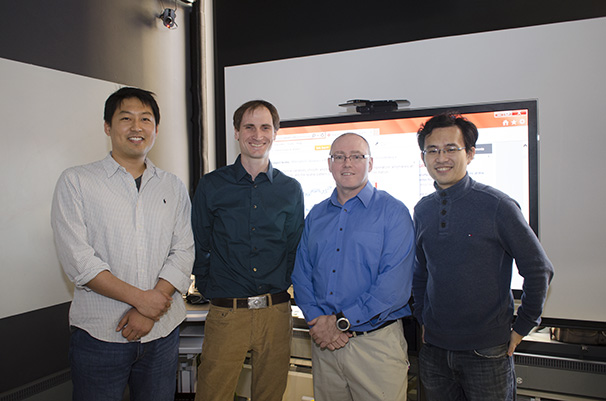
A team from NYU’s Courant Institute of Mathematical Sciences discovered evidence that rising temperatures in the North Atlantic influence Antarctica’s melting ice sheets. The research was part of the doctoral studies of Xichen Li, the study’s lead author, who specializes in mathematics and environmental studies. The study began as an assignment from Mathematics and Atmospheric Ocean Science professor David Holland.
“The Courant started 20 years ago [in] a new direction — environmental science, but taking kind of a mathematical twist to it,” Holland said. “So this project used observations collected by others to develop some further theory into how our planet operates.”
Li’s project falls under an umbrella of research on Antarctica sponsored by the National Science Foundation and NASA. The Courant Institute teamed up with NYU Abu Dhabi to use research funds from the foundation. Data for the study focused on world ocean temperatures, which were then mathematically applied to a global atmospheric model.
“A key question in climate research is why the Arctic is changing very rapidly, but the Antarctic is not,” said Professor Edwin Gerber, one of the team members. “We initially were focused on the impact of the Atlantic on the Arctic. Xichen found that the model we were using, however, did a poor job simulating trends around Greenland. We were initially disappointed, but this motivated us to look southward, and this led us to discover something unexpected.”
The discovery that elevated North Atlantic temperatures influence far-away Antarctica may be surprising. Most previous research focused on the Pacific Ocean, since its currents and temperatures are more variable. The NYU scientists chose the North Atlantic because of recent occurrences.
“[The] North Atlantic Ocean just experienced the world[‘s] strongest long-term warming trend during [the] last years,” Li said. “We believed this most dramatically impacts our earth system.”
Li said the ramifications of this discovery could increase understanding of the linkage between the world’s climate systems. He said Atlantic temperatures influenced the January Arctic vortex that sent North America’s temperatures plummeting. Antarctic ice-melting though, has larger implications for North Atlantic coastlines.
“All New Yorkers probably know what can happen with three meter sea level rise,” Changhyun Yoo, another team member, said. “Changes in atmospheric condition and sea ice are important factors for ice melting processes and hence must be understood.”
Courant’s study has opened new avenues for exploring oceanic and atmospheric climate change. Li said that new hypotheses and university studies are already in the works for continued explorations into the Atlantic’s influence on global climate.
Holland, though, is enthusiastic about his student and team’s accomplishments, and hopes other NYU students are encouraged to engage in the type of scientific inquiry offered by schools like Courant.
“I find that we’re learning lots of things about the planet, but students somehow think they’re not capable of doing it and that other people have to — we’re just students ourselves,” Holland said. “There’s different ways to be involved. One way is very mathematical, so that group of people; the other is very observational, and that’s for another type of individual.”
A version of this article appeared in the Thursday, Feb. 6 print edition. Andrew Spohn is a staff writer. Email him at [email protected].






















































































































































